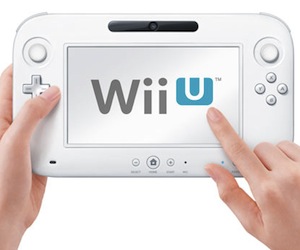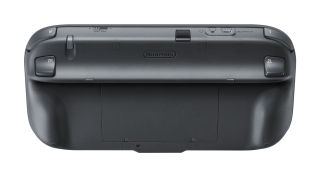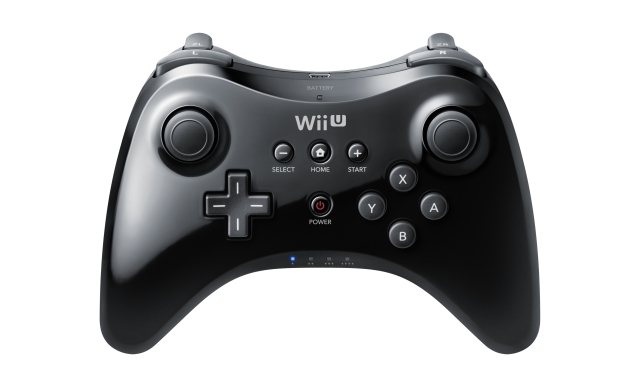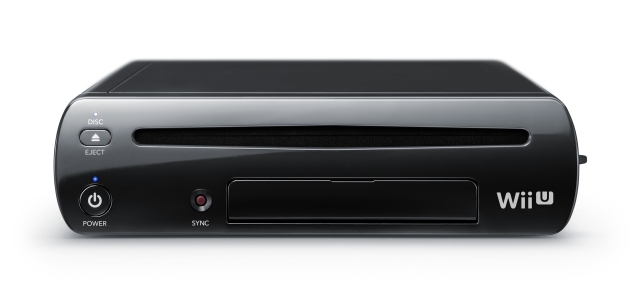Wii U Preview – Hardware Impressions & Summary
 All good things must come to an end, so Lee Garbutt finishes up his mammoth Wii U preview with a look at the hardware itself, along with the peripherals available for the system.
All good things must come to an end, so Lee Garbutt finishes up his mammoth Wii U preview with a look at the hardware itself, along with the peripherals available for the system.
So, finally it has come time to look at the Wii U system itself, plus my general thoughts on what we have seen so far.
It’s taken a while, but I’ve finally said all I can say about the Wii U games I have experienced, but before I go and take a lie down and give my fingers a rest from typing, I’d like to take a little time to just talk about the Wii U hardware in general, from the new controllers to the system itself.
The Wii U GamePad


May I just alleviate your fears and tell you that the Wii U GamePad is way more comfortable than it looks. Despite the pad’s width and general size, it is also a lot lighter than you would imagine.
In terms of button placement, the four shoulder buttons (L, R, ZL & ZR) are the most comfortable shoulder buttons I’ve ever used – They are placed in such a position that it was actually comfortable to place both my index fingers on the L & R buttons, and my middle fingers on the ZL & ZR buttons at the same time.
One thing that might take a lot of getting used to however, is the location of the face buttons and analog stick on the right side. For years we have gotten used to having the analog stick at the bottom, and the face buttons on the top; the Wii U GamePad has this completely reversed and, I won’t lie, it doesn’t feel quite right, but this could be because it’s so different (Let’s face it, going from a 360 pad to a PS3 pad and vice-versa, can be a little strange at times, due to a similar issue on the left-hand side of the pad).
In regards to the all-important touch screen on the GamePad, it’s perfectly fine for its intended purpose. It isn’t as elegant or as advanced as an iPod Touch/iPhone/iPad screen (no multi-touch technology here), or as sharp or vivid as a PlayStation Vita screen; but it is a good size and can output images at a high enough resolution to play games such as Rayman Legends or Trine 2, solely on the GamePad itself.
It is a great controller, and so long as developers utilise it in sensible ways, it will be a great selling point for the Wii U; for both core and non-core gamers. The prospect of being able to control your TV with it, could also be a great feature as well.
The Wii U Pro Controller

Now onto the brand new Pro Controller. Needless to say, not only does it look like a Xbox 360 controller, it almost feels exactly like one as well; it feels great and it’s responsive enough.
Much like the bigger GamePad, the face button and analog stick arrangement on the right side of the pad will take a little getting used to, but it’s a great controller (with a quality Nintendo D-Pad, of course).
It’s just comforting to know that there is a controller for the Wii U that will suit the needs of core gamers’ preferred control schemes for all their favourite genres.
Original Wii Peripheral Support
The fact that Nintendo are using original Wii MotionPlus and Nunchuk controllers for some of the games I played is actually a really good idea in my opinion. Why buy new additional controllers for multiplayer Wii U titles, when some of them already support the existing Wii Remotes that you probably already have?
The fact that Nintendo haven’t abandoned the Wii Balance Board for the new Wii Fit U is also a stroke of genius, but I hope that support will extend a bit further than just a new version of Wii Fit.
The Wii U System
 So here’s the potential deal maker or breaker. How powerful is the Wii U?
So here’s the potential deal maker or breaker. How powerful is the Wii U?
Honestly I have no idea, and I don’t think the current range of demos are really an example of what the system really can do. It’s great to see Nintendo titles in HD (the 2D artwork in games such as Game & Wario really pops, thanks to the enhanced resolution), but there is nothing that really indicates that the Wii U is any more powerful than the current generation of systems.
However, I have a theory: We are starting to see games on the Xbox 360 and PlayStation 3 that push the limits of both platforms. While Wii U games currently don’t look much more impressive than these games, it is likely that the Wii U isn’t struggling, performance-wise. It is entirely feasible that given a bit of time, we could see the system’s true horsepower.
Just remember that we won’t see Sony or Microsoft’s next consoles for at least a year so, of course, the Wii U is going to be less powerful than these systems. In all fairness, Nintendo have never been successful with home consoles that had greater processing power than the competition (Nintendo 64, GameCube). You also need to bear in mind that the Wii U has enough horsepower to output video to up to three seperate devices (A television and up to two GamePads) – that is no mean feat. It could be possible that sacrificing the GamePad display could make for better looking games on the television.
We’ve truly come to a slowdown in terms of advancements in graphical fidelity. We will never again, see the jump in graphics technology that we saw in previous console generations (such as 8-Bit to 16-Bit, then 16-Bit to 32/64-Bit). The fact that the Wii U won’t be as powerful as the other consoles, won’t be a big deal this generation, so long as the hardware supports 1080p output, then it is more than equipped for its lifespan (however long that may be).
Summary
As a lifelong follower, and fan, of Nintendo, I felt crushed and disappointed by their lacklustre E3 presentations. However, now, after getting my hands on the Wii U GamePad, I feel so much more positive about the system as a whole. Yes, I played some bad games that did little to use the new technology; but for every Ninja Gaiden 3: Razor’s Edge, there was a Game & Wario, a Project P-100 or a ZombiU, that actually takes a look at the new possibilities the GamePad brings, and tries to use them in sensible and logical ways.
It’s far too early for me to give you a verdict about the Wii U. It’s too early for anyone to do so, but I promise you that the system is worthy of your attention, because the potential is there for some truly creative and original gameplay experiences. The Wii U is a chance for Nintendo to build some bridges with gamers and developers alike, and we should be willing to give them the chance to do so.





